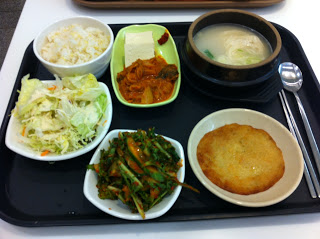Gyeonghuigung (경희궁) is one of the Five Grand Palaces of the Joseon (조선) dynasty in Seoul. Admittedly, it is the least famous of them and has received the least attention online. I wouldn't even call myself an amateur photographer, let alone a photographer, but I'm including some photos so people will know what to expect. I also added a couple links at the bottom to other posts about this palace, with better photos.
Brief History
Gyeonghuigung was built in 1617 during the reign of King Gwanghaegun. It was originally called Gyeongdeokgung (경덕궁) and has also been referred to as Seogwol (서궐). It was renamed Gyeonghuigung in 1760 during the reign of King Yeongjo. Much of it has been destroyed over the years, so now there are only a few remaining structures.
Main
Sites
Heunghwamun (흥화문)
Heunghwamun refers to the front gate of Gyeonghuigung. This gate was originally in a different location and moved to its present location in 1988.
Sungjeongmun (숭정문)
Sungjeongjeon (숭정전)
This is the main hall of the palace and was built in 1618. This hall was used by kings to arrange official ceremonies and was used by some of them for their inauguration.
Jajeongjeon (자정전)
This is the Royal Council Hall and it was built between 1617-1620. It was mainly used by the king for conducting royal affairs.
Seoam (서암)
This rock, located behind Taeryeongjeon, was originally called Wangam (왕암) 'King's Rock' and is associated with the story of why King Gwanghaegun chose to have Gyeonghuigung built at this location. It was renamed Seoam in 1708 by King Sukjong.
Taeryeongjeon (태령전)
Starting in 1744 this structure became home to a portrait of King Yeongjo, which can be seen in this photo.
Japsang (잡상)
As with many of the Korean palace buildings, you will notice the earthenware rooftop figurines, called Japsang (잡상). Many of the characters are taken from the the Chinese classic Journey to the West; you can learn their individual names and see close-up photos of them here and read more about them here.
Geumcheon Bridge (금천교)
This bridge was built over the Geum stream in 1619, and can be found in front of the Seoul Museum of History. It was recently restored in 2001.
I hope that you found this brief introduction to Gyeonghuigung interesting and helpful. This palace is very conveniently located behind the Seoul Museum of History in Jongno-gu (종로구) and worth a visit if you are nearby. Additionally, it is usually considerably less crowded than the other palaces. As always, any comments are welcome.
More information about this Palace can be found here and here, including more photos.
Address: Sinmunno 2(i)-ga, Jongno-gu, Seoul, South Korea










